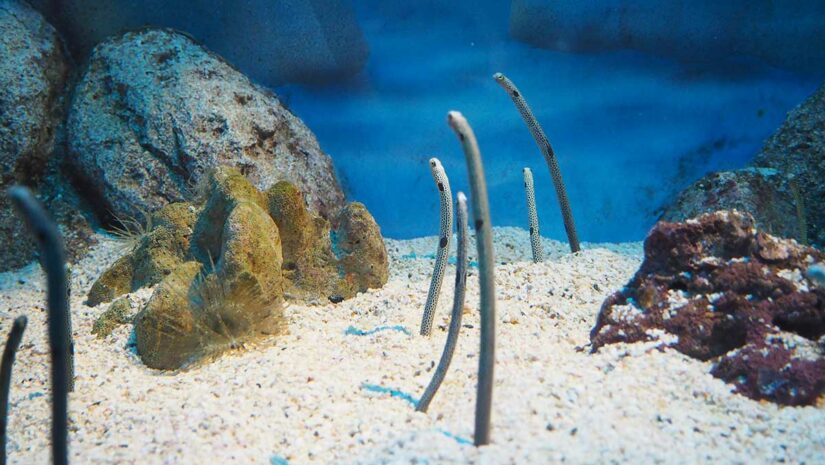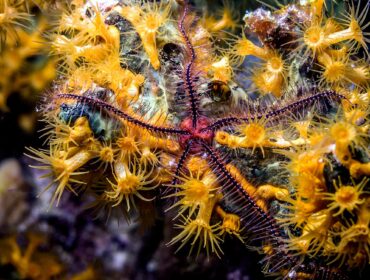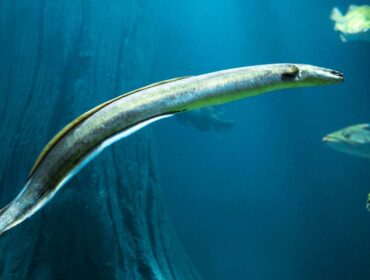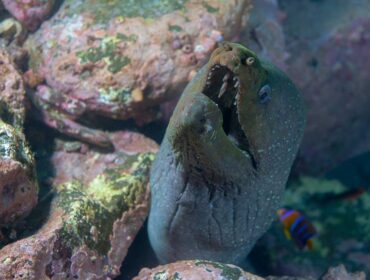While scuba diving sandy sea beds one may comes across what initially appears to be a colony of seagrass sprouting from substrate, but upon closer inspection the grass appears to vanish like it was never there to begin with. What you just witnessed was not a mirage, the effects of narcosis, or your mind playing tricks on you, but simply one of the most interesting varieties of conger eels known as the Garden Eel.
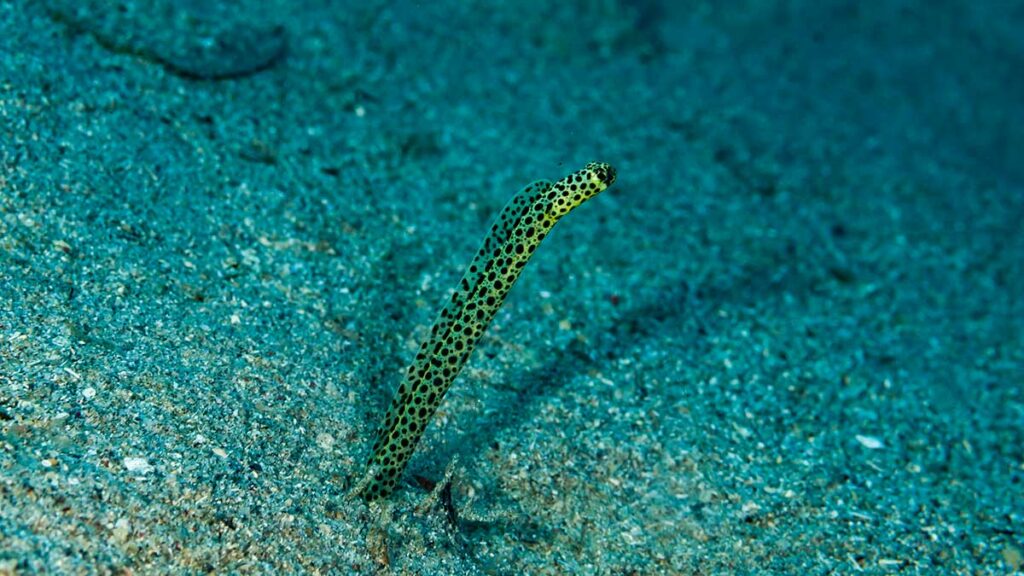
What is a garden eel?
The Garden Eel, also known as Hass’s Garden Eel, looks like a colony of seagrass, and burrows into the sand at the bottom of many tropical seas. They are very small compared to other eels but have large eyes and tiny nostrils. They rely almost entirely on their sight to capture food.
Habitat
Garden eels live in large groups in underwater sandbanks. Each eel has to make its own burrow that goes straight down into the sand. They dig these burrows with their tails, using a gland in their tail which secretes a slime that makes the sand stick together. This technique ensures that the eels burrow does not collapse.
Behavior
The garden eel eats without leaving its burrow. It keeps its tail inside and sticks the rest of its body out. With its head exposed, the garden eel spends most of the day attempting to capture zooplankton that the current delivers to it. When it gets scared, it takes its whole body into the burrow closing the burrow with a mucus plug to protect itself. This is the secret to the garden eel’s vanishing act, leaving no trace of the burrow as it retreats.
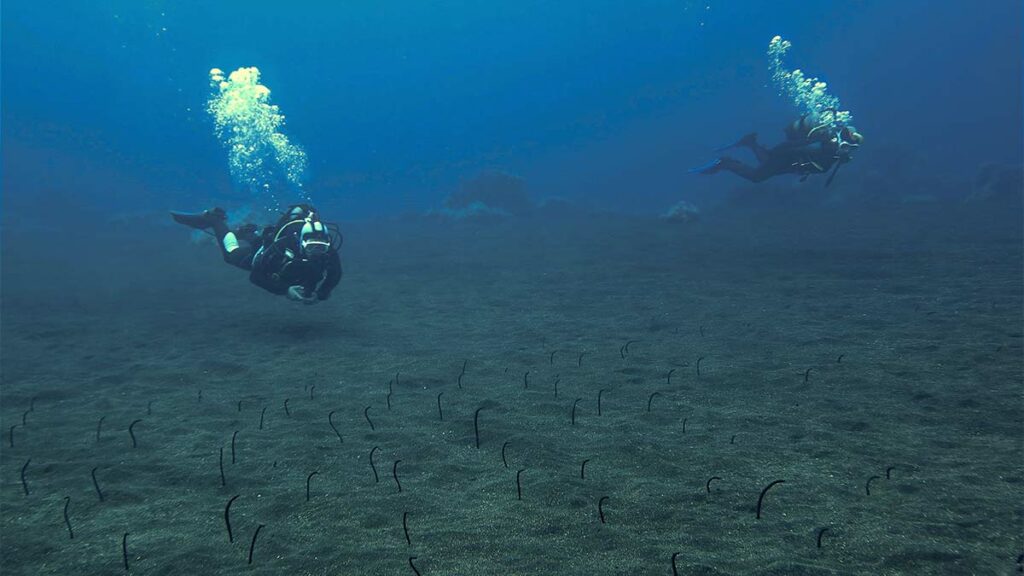
Characteristics
This creature blends in and disguises itself as sea grass, especially since they commonly live in groups. It literally looks like you are looking at a field of sea grass. Garden eels are quite striking with a leopard pattern of spots, with two large dark spots on their bodies. They can grow over a foot long, but most of the time you only see part of their bodies as the rest is buried in the sandy bottom.
Garden eels are notoriously difficult to photograph as they are extremely shy, and will retreat into their burrows upon seeing a scuba diver approach. One of the most renowned dive sites in the world to witness garden eels is in Dahab, Egypt — at the site known as Eel Garden.
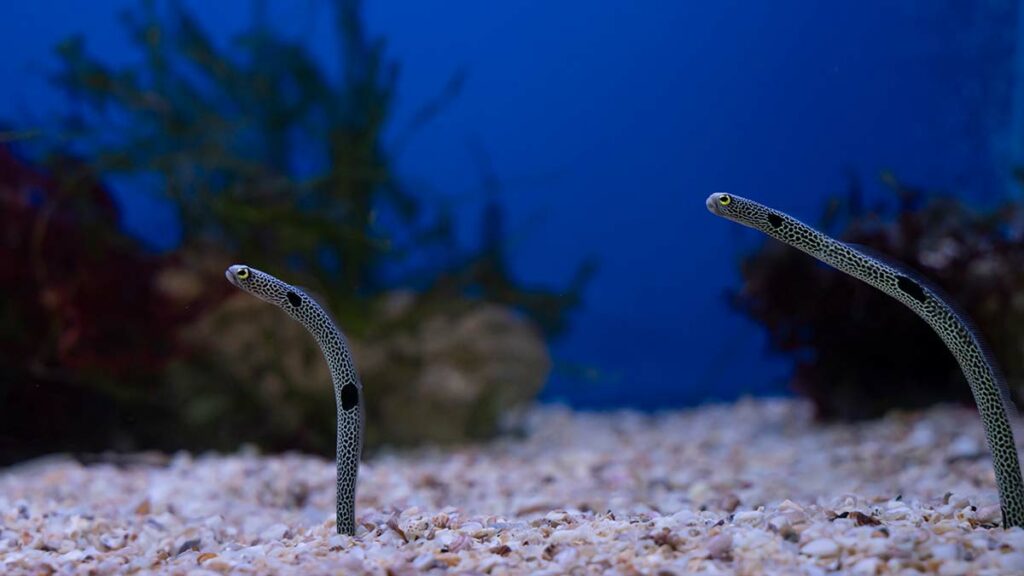
Conclusion
Garden eels are truly fascinating creatures that inhabit the ocean’s sandy bottoms. Despite their initially unassuming appearance, these slender and shy eels possess unique adaptations and behaviors that make them a captivating subject of study. From their intriguing burrow-building skills to their synchronized movements in response to threats, garden eels showcase the wonders of marine life and highlight the intricacies of ecosystem interactions.
As delicate filter feeders, they play a crucial role in maintaining the balance of their habitats. By delving into the world of garden eels, we gain a deeper appreciation for the diverse and remarkable creatures that inhabit our planet’s vast and mysterious oceans.

